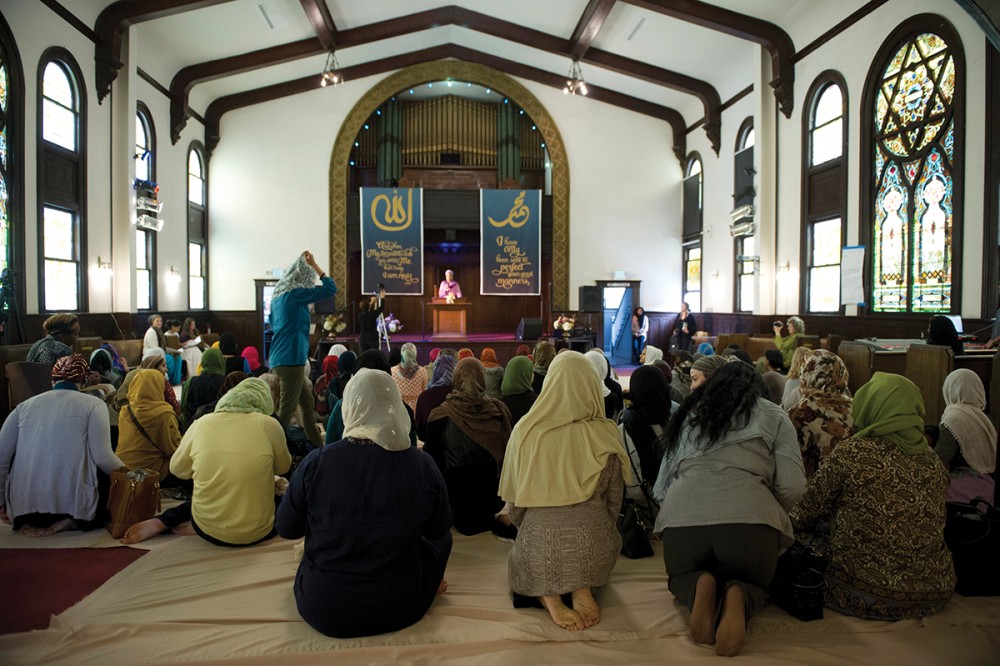A woman’s place—at the mosque
How American Muslim women are transcending barriers to leadership.

When Zariah Horton stepped to the front of a mosque in Los Angeles last year and prepared to address a congregation of Muslim women, she was assuming a position she never imagined being in. She had attended jumu’ah, or Friday prayers, at mosques in the United States for decades, but the idea of leading prayers herself had never felt like an option, because she had only seen men in the role.
“It never occurred to me, I guess due to the gender factor,” she said.
But when the Women’s Mosque of America opened in Los Angeles in 2014, Horton’s ideas began to change. The Women’s Mosque is exclusively for women. Women lead all aspects of the Friday prayer service, including making the call to prayer, delivering the sermon, and leading the congregation in prayer—activities traditionally performed by men. (According to most Islamic scholars, women are not permitted to lead men in communal prayer, but they can lead other women.) The Women’s Mosque meets at the First Unitarian Church of Los Angeles, transforming a room in the church by putting up banners emblazoned with the names Muhammad and Allah in Arabic calligraphy.




